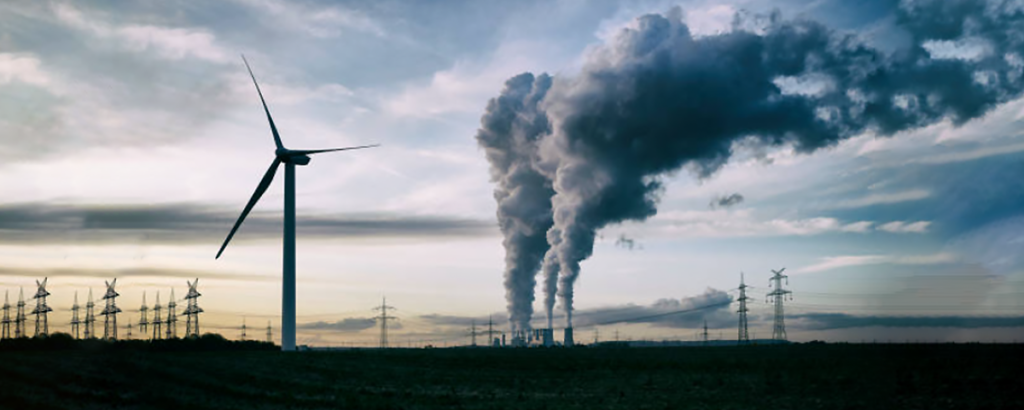
KRBN: EU Tests €80 Threshold, REPowerEU Impact Assessment, California Carbon for Inflation Protection
Clarity is materializing for many unknowns in the global carbon markets. Rising energy prices from the Russian invasion of Ukraine and the desire to diversify natural gas supply chains in the European Union had led to a pause in the triple-digit rise in the price of EU carbon allowances experienced in 2021. While the initial uncertainty following the invasion shocked markets, we now have greater clarity on Europe’s game plan for adapting and how carbon allowances will factor into that plan.
In California, several new climate policies were introduced though the more aggressive carbon reduction target did not materialize, and the State Assembly agreed to keep its last nuclear plant online for longer than anticipated, which affected prices. Still, the inflation-protection inherent in the California program’s design, and the US’s more self-sufficient energy supply, could help boost California prices.
The analysis below shows you the top performance drivers for each key carbon market covered by the KraneShares Global Carbon Strategy ETF (KRBN).
EU Carbon Tests €80 Threshold Again as the Market Eyes Return to Higher Levels
EU carbon allowance (EUAs) futures trended lower during much of October but rallied sharply to reach a high of €82.58 ($85.81) at the end of the month as short-positioned investment funds embarked on a massive, week-long short covering that pushed prices up by 18% in just a few days.1 Since then, prices have consolidated back to the mid-70s as the market awaits updates on upcoming policy reform and prices in the general outlook for the rest of the year.
Looking back throughout 2022, EUAs have seen a repeated resistance and/or support at the €80 ($83) level. Volume has traded between €60-98 ($62-102) so far this year, and prices have spent most of April to September in the €80-90 ($83-93) range. This price action pattern may continue until new positions get reestablished at higher levels as the market absorbs some recent positive signals and establishes a clear view of the key regulatory matters currently being discussed (More about the proposed reforms here).
.While the region’s energy crisis had been weighing on the market, the EU’s collective strengthening of its supply this year has helped push gas prices lower--down as much as two-thirds since the summer.2 By diversifying energy supply sources, setting minimum storage inventory obligations, and reducing seasonal demand, EU gas storages are currently more than 95% complete.3 (More about the energy prices here).
Another factor influencing EUA prices is the macro sentiment of stocks and inflationary pressures. While EUAs are largely uncorrelated to stocks, they are not fully immune to equity market volatility. Recessionary fears and a mixed industrial output outlook have left a somewhat gloomy economic picture; however, equity indices are currently holding up better than expected, while Gross Domestic Product (GDP)* remains largely positive. This sentiment was reflected in European equity markets, with EuroStoxx50 rallying ~16% over the last six weeks.4 Germany surprised analysts by posting 0.3% GDP growth in Q3. Perhaps the greatest concern of the region and one of the primary drivers of inflation was the Russian invasion of Ukraine. EUAs saw some volatility initially though prices rebounded and demonstrated the market’s long-term strength, both from a regulatory and a fundamental standpoint. Policy reform and market tightening measures also present strong structural support for the future of the program and its ability to weather a mixed macro environment.
We believe sustaining prices above the €80 threshold is key for the next leg higher, where the upside has traditionally been €85-95 ($88-99). Much of the near future market direction will depend on balancing forces of economic news versus policy discussions on the €20 billion ($21 billion) financing plan for REPowerEU.
REPowerEU Impact Assessment
One of the direct results of the Russian invasion was REPowerEU, a plan to make the bloc less dependent on Russian fossil fuels. In order to understand how the impact of this plan, it is important to know the fundamentals of the EUA market and the EU legislative process.
.The REPowerEU was initially proposed by the European Commission, the executive of the European Union and the only body among the three institutions involved in the EU lawmaking process that can propose legislation. Earlier this year, the Commission proposal included tapping into the market stability reserve (MSR). The MSR was introduced in 2019 to help control the number of allowances in circulation to prevent price volatility. Releasing more allowances from the reserve introduces new supply, which could have the effect of dampening prices. Additionally, it would set a precedent that the fundamental mechanisms of the program could be altered at will, undermining the integrity and confidence in the EU ETS. As such, it has been met with strong opposition recently from a number of EU countries and political groups in the EU Parliament.
In this month’s plenary session, the Parliament is set to finalize its position, which will most likely be to frontload EUAs from future auctions (defined below), a materially more constructive solution than tapping into the MSR. Meanwhile, the EU Council has proposed a hybrid approach of 25% sourced from frontloading and 75% from the Innovation Fund. Over the 2020-2030 period, the Innovation Fund supports innovative technologies and projects designed to reduce emissions across Europe, where funding is sourced from auction revenue from the EU ETS.
Bloomberg New Energy Finance (BNEF) sees EUA prices possibly diverging by up to 23% depending on how the EU lawmakers vote on the REPowerEU plan (see table below for a summary of the EU bodies’ different proposals and BNEF’s price forecasts based on the different funding plans).5

With frontloading, allowances scheduled to be auctioned during 2027-2030 are instead brought in earlier, in the 2023-2026 period. There would be a limited increase in annual EUA auctioning, which should lead to similar financial flows as with the MSR plan because of the shift in auction volume over time yet avoids setting a new (questionable) precedent and potentially increased emissions.
BNEF’s analysis shows Parliament’s frontloading approach having a more bearish short-term impact on the market, but long-term would be bullish. Parliament’s proposal could push prices up to the highest level to reach €166/ton ($172) by 2030, compared to the Council’s €147 ($153), Commission’s €136 ($141), and a forecast with no REPowerEU of €139 ($144).
With the Commission’s proposal of dipping into the MSR most likely out, we are looking at either full frontloading or a multi-source funding approach. The three legislative bodies will have to come to an agreement on the issue in their upcoming tri-loge talks. Needless to say, we will have more clarity on their collective position over the next two months as discussions wrap up.
Energy Security Push is Supportive for UK Allowances (UKAs)
While plans to phase out coal plants over the coming years remain intact, the UK plans to keep plants open through the winter to mitigate energy security issues across Europe. Increased coal burning will mean stronger demand for UK allowances, which could be supportive for UKA prices.
UKAs saw a run-up in August, reaching a high of £97.75 ($116.18) but have since come down and have been moving relatively in line with EUAs. UKAs have been averaging in the mid £70s over the last several weeks.6
California Carbon Allowances (CCAs) for Inflation Protection
At month end, CCAs hit $29.84, up nearly 15% from September lows ($26.05). Prices have remained within the $28-29 range in November.6 BNEF reports that prices are supported in part by the soon-to-be-released updated Scoping Plan, which outlines the policies needed to transition away from fossil fuels and keep the state on track for carbon neutrality by 2045. There was also the program’s November 1st compliance deadline, where all compliance entities had to surrender 30% of their 2021 allowance obligations (covered emissions), which reduces supply and, in turn, could provide a slight boost to CCA prices. The remaining 70% is due in 2024, at the end of the 3-year compliance period.7
On September 1st, we saw prices fall sharply to $26.85, the lowest level since the start of the invasion of Ukraine. At the time, the state assembly had voted on a series of climate-related policies. The market reacted to two key policy votes: lawmakers struck down Governor Newsom’s more ambitious emissions reduction target (55% reduction in emissions by 2030 from 1990 levels compared to the previous 40%) and agreed to extend the last nuclear plant, Diablo Canyon, to 2030.
Going forward, there are strong drivers supporting CCA prices. The rate hikes and high inflation structurally push CCA prices up because of the market’s reserve price factors in annual inflation. The floor price, formally called the auction reserve price, increases each year by 5% plus inflation as measured by the consumer price index (CPI). In our current environment, CCAs, therefore, also serve as an inflation protection investment opportunity because of this pricing mechanism. Moreover, US industrial output has remained strong and not subject to higher energy costs seen in Europe though further economic slowdown could lead to more muted industrial activity down the road.
Additionally, supply chain disruptions could delay the build-out and adoption of renewables in the near term, but this would mean more reliance on fuel-burning sources for energy in the meantime and could drive carbon prices higher. Climate policy also remains a top priority. Despite Newsom’s target being downvoted, the Air and Resource Board (ARB), the CCA regulator, is still modeling a 48% reduction in its climate Scoping Plan and the state still approved a slate of other climate-related policies. We may see some slight downward pressure on the market from the extension of Diablo Canyon—which accounts for 9% of the state’s power—as it could impact demand for allowances.
Overall, CCAs are down from their earlier peak in August at $32.60 and a high of $34.60 in January. Given the reserve price is modeled to rise into the $22-23 region, an entry point in the high $20s today is compelling. We would like to see CCAs returning above the $30 level in the coming weeks.
Regional Greenhouse Gas Initiative (RGGI) Waiting Game
RGGI has been fairly quiet, playing more of a waiting game around states’ participation in the program. Pennsylvania’s entry into RGGI auctions was met with some legal roadblocks, which have officially pushed its participation into next year. It also appears that Virginia will remain in RGGI for the remainder of 2022 into 2023 though the state may exit later. RGGI prices have been trading in a narrow range at around the $13 level for the last few months, which is just below its high for the year of $14.44 in early January.
Carbon Price Outlook
With carbon analysts at the recent Carbon Forward conference in London issuing an €80 ($83) median forecasted price for EUAs by the end of 2022 and clarity returning to the supply and demand dynamics, we are watching closely for the break out above this level. BNEF conservatively predicts the average EUA price in 2023 to be €79, or around 8% higher than today’s prices. However, their analysis shows prices rising at a faster rate than previously forecasted through the end of the decade, to reach €147 ($153) in 2030 (8% higher than predicted six months ago). This new forecast is based on the idea that cheaper allowances will delay the adoption of emission-abatement technology like renewables.
Further, our California demand and supply model indicates emissions (demand) versus auctions (supply) will roll over from surplus to deficit from Q1 2023. This will set the tone for accelerating tightening from here out, even without additional policy measures. BNEF reported that California's floor price should increase to $35 by 2030, though if inflation remains, say, 10% higher over the next two years, the floor could instead reach $40. Historically, CCA prices stay around the floor price level, but in 2021, has since moved higher to be more in line with rising inflation and tighter cap regulations.
*GDP: Gross domestic product (GDP) is the total monetary or market value of all the finished goods and services produced within a country’s borders in a specific time period.
- Data from Bloomberg as of 10/28/2022.
- Barons, “Europe Solved the 2022 Natural-Gas Crisis but 2023 Looks Tougher,” 11/3/2022.
- Reuters, “95.4% of EU gas storage is filled,” last updated 11/8/2022.
- Data from Bloomberg as of 11/10/2022.
- BNEF, “European Carbon Market Trajectory Hangs on Upcoming Deal,” 11/2/2022.
- Data from Bloomberg as of 11/10/2022.
- BNEF, “California Carbon Price Perks Up Ahead of Compliance,” 10/28/2022.










